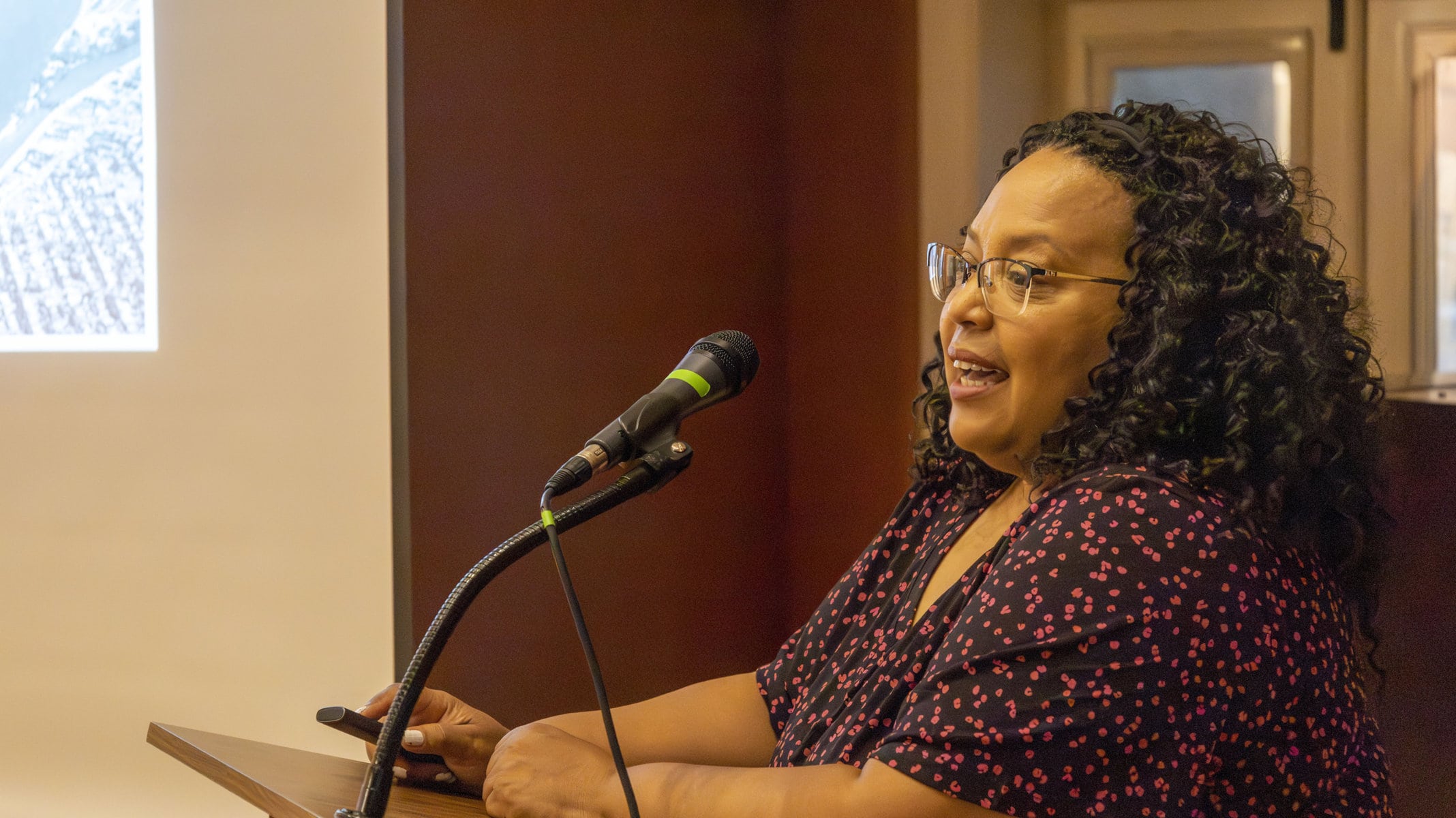Talking about race is one of the hardest discussions to have “on this planet,” says historian Rochelle Bush.
“Nobody wants to discuss it,” the St. Catharines-based historian says. However, without that difficult discussion, she says, it’s a topic that people will ignore.
Keeping that conversation going was the focus of her lecture “From Bondage to Niagara” at the Niagara-on-the-Lake Museum.
It highlighted the region’s connection to the Underground Railroad movement and its often-overlooked connections to Niagara-on-the-Lake.
For an hour, Bush retold the stories of freedom seekers and why they escaped, how they used the Underground Railroad to do it and where they crossed, including places in Niagara.
The presentation was part of the museum’s ongoing lecture series.
The Underground Railroad is known to many today as a movement from the 1800s to free enslaved Black people, or freedom seekers, in the United States.
It was a network of secret roads and safe houses established during the early to mid 19th century, Bush said, a “secret society” with a “vast network of people helping people.”
She said it was a “secret society” that included a “vast network of people helping people.”
As soon as freedom seekers crossed into Canada, they were automatically free, she said.
She also shared the history of how Niagara-on-the-Lake was an important location during the Underground Railroad movement – although the discussions around its significance are limited.
“People don’t look at Niagara-on-the-Lake as being a major abolitionist hub, and it was, we know about the Chloe Cooley incident, we know that there were some black and white kidnappers in the area,” said Bush.
Cooley opened the gateway to freedom for enslaved Black people, she added.
Something that sticks out to Bush the most is why many freedom seekers fled – which, she said, are not for the reasons people think.
“A lot of people think freedom seekers were running away because they were tired of being oppressed, and primarily because they were tired of being beat – that wasn’t it,” she said.
Stories told by freedom seekers, she said, show their primary fear was about losing their connections to their families.
Josiah Henson, who escaped with his family on Oct. 28, 1830, fled out of fear of being separated from them after his enslaver, Isaac Riley, had decided he wanted to sell him alone to another slave owner.
He and his family, his wife and four children, walked 600 miles from Kentucky with a makeshift backpack for his two toddlers.
Bush, a freedom seeker descendant, told The Lake Report she wonders how many times that happened to her ancestors.
Freedom seekers crossed into Canada via railways, bridges and waterways including Lake Erie, Lake Ontario, the Detroit River and the Niagara River.
It was dangerous, but it was the only option for many, she said.
Bush believes that NOTL doesn’t get enough recognition for its role as an Underground Railroad stop, a crossing point and an abolitionist hub.
However, NOTL played a large role in acting as all three destinations.
Harriet Tubman, known for her role in helping freedom seekers escape to Canada after the passing of the Fugitive Slave Act in 1850, likely crossed at the Queenston-Lewiston bridge at one time, said Bush.
“That act meant that any free Black people who were living in the northern states that could be accused of being runaways could be captured and returned to enslavement,” she said.
It also meant Black people who were born free could also become enslaved.
“There’s also the book, ‘From Slavery to Freedom,’ that has four accounts of people crossing into Niagara,” she said.
“But for some reason, Niagara-on-the-Lake is undervalued as an Underground Railroad stop, as well as a crossing point,” Bush added.
She said the first Black publisher in North America, Mary Ann Shadd, even wrote about Niagara in the Provincial Freeman, an anti-slavery newspaper, noting how lovely it is: “The coloured citizens are prosperous … nearly every family possessing a homestead.”
As well, Hiram Wilson, a white abolitionist from St. Catharines, working with many others, was a huge part of the abolitionist movement — and Niagara was one of the main hubs, she said.
There is so much history, like the Underground Railroad, that people might not know about if they only listened to what they learned in school, said Lahring Tribe, who drove from Mississauga for the presentation.
Bush said it’s important to highlight the past so “that people have the awareness.”










